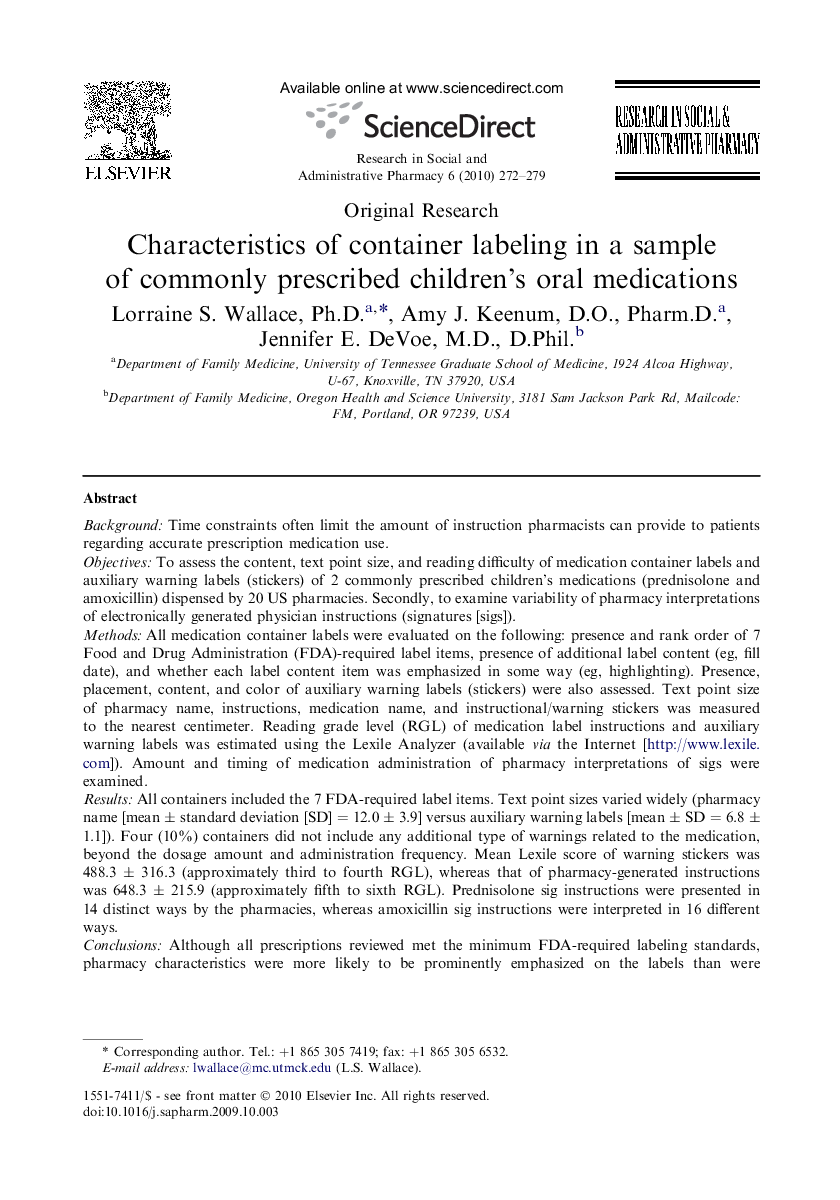| Article ID | Journal | Published Year | Pages | File Type |
|---|---|---|---|---|
| 2508874 | Research in Social and Administrative Pharmacy | 2010 | 8 Pages |
BackgroundTime constraints often limit the amount of instruction pharmacists can provide to patients regarding accurate prescription medication use.ObjectivesTo assess the content, text point size, and reading difficulty of medication container labels and auxiliary warning labels (stickers) of 2 commonly prescribed children's medications (prednisolone and amoxicillin) dispensed by 20 US pharmacies. Secondly, to examine variability of pharmacy interpretations of electronically generated physician instructions (signatures [sigs]).MethodsAll medication container labels were evaluated on the following: presence and rank order of 7 Food and Drug Administration (FDA)-required label items, presence of additional label content (eg, fill date), and whether each label content item was emphasized in some way (eg, highlighting). Presence, placement, content, and color of auxiliary warning labels (stickers) were also assessed. Text point size of pharmacy name, instructions, medication name, and instructional/warning stickers was measured to the nearest centimeter. Reading grade level (RGL) of medication label instructions and auxiliary warning labels was estimated using the Lexile Analyzer (available via the Internet [http://www.lexile.com]). Amount and timing of medication administration of pharmacy interpretations of sigs were examined.ResultsAll containers included the 7 FDA-required label items. Text point sizes varied widely (pharmacy name [mean ± standard deviation [SD] = 12.0 ± 3.9] versus auxiliary warning labels [mean ± SD = 6.8 ± 1.1]). Four (10%) containers did not include any additional type of warnings related to the medication, beyond the dosage amount and administration frequency. Mean Lexile score of warning stickers was 488.3 ± 316.3 (approximately third to fourth RGL), whereas that of pharmacy-generated instructions was 648.3 ± 215.9 (approximately fifth to sixth RGL). Prednisolone sig instructions were presented in 14 distinct ways by the pharmacies, whereas amoxicillin sig instructions were interpreted in 16 different ways.ConclusionsAlthough all prescriptions reviewed met the minimum FDA-required labeling standards, pharmacy characteristics were more likely to be prominently emphasized on the labels than were medication instructions and patient information. Systematic initiatives to standardize and call attention to key medication instructions and warnings should be considered.
